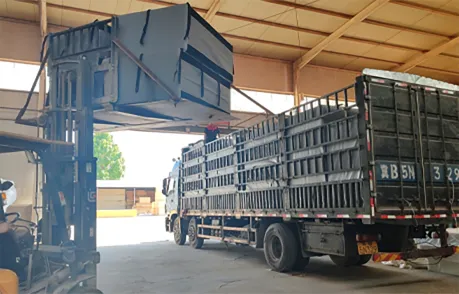cheap pressure injury care
Affordable Pressure Injury Care Solutions and Strategies
Pressure injuries, often referred to as pressure ulcers or bedsores, are a significant concern in healthcare, particularly for individuals with limited mobility. These injuries can lead to severe complications and increase healthcare costs. However, effective care does not have to be expensive. This article explores affordable strategies for preventing and managing pressure injuries, emphasizing the importance of education, proper equipment, and community resources.
Understanding Pressure Injuries
Pressure injuries occur when sustained pressure on the skin leads to localized damage, typically over bony areas. Factors such as impaired mobility, poor nutrition, moisture, and friction can exacerbate the risk of developing these injuries. Common stages of pressure injuries range from non-blanchable redness of the skin to full-thickness loss involving muscle and bone. Given the complexity of these injuries, prevention and treatment require a multifaceted approach.
Prevention Strategies
1. Education and Training One of the most cost-effective ways to prevent pressure injuries is through education. Healthcare providers, caregivers, and family members should be trained to recognize the early signs of pressure injuries and implement preventive measures. Regular training sessions can empower caregivers to reposition individuals frequently (at least every two hours for those in bed), use appropriate cushions, and maintain skin hygiene.
2. Innovative Positioning Techniques Utilizing repositioning and movement to relieve pressure is essential. Low-cost strategies, such as using rolled up towels or foam wedges, can help achieve better body alignment and distribute weight more evenly. Additionally, teaching caregivers how to use simple techniques, like ‘the 30-degree tilt,’ can significantly reduce pressure on vulnerable areas without requiring expensive equipment.
3. Nutrition A healthy diet plays an integral role in skin health and overall well-being. Ensuring that individuals receive adequate protein, vitamins C and E, and zinc can promote skin integrity and healing. Caregivers can work with dietitians to create budget-friendly meal plans rich in these essential nutrients, avoiding costly dietary interventions.
cheap pressure injury care

Cost-Effective Treatment Options
If a pressure injury does occur, managing it effectively is critical to prevent complications and reduce healthcare costs.
1. Basic Wound Care Supplies While advanced wound care products can be expensive, many effective, cost-efficient alternatives exist. For instance, using hydrocolloid dressings can provide a moist wound environment and are comparatively affordable. Additionally, standard saline solutions can be used for wound cleaning without the high costs associated with specialized cleaning agents.
2. Home Remedies and Natural Treatments Some natural treatments, such as honey and aloe vera, have shown promise in wound healing. Honey, known for its antibacterial properties, can be applied directly to wounds, while aloe vera can soothe and hydrate the skin. These remedies can reduce the need for more expensive commercial products for some individuals.
3. Community Resources and Support Many communities offer resources for those at risk of pressure injuries. Local health departments may provide free assessments, education programs, or workshops focused on pressure injury prevention. Additionally, non-profit organizations may offer financial assistance for wound care supplies or access to support groups, which can be invaluable for caregivers.
Conclusion
Affordable pressure injury care is achievable with proper education, innovative strategies, and the use of community resources. By focusing on prevention through basic measures and utilizing cost-effective treatment options, individuals and caregivers can manage pressure injuries without incurring significant expenses. As healthcare costs continue to rise, it is essential that we remain proactive and resourceful in our approach to pressure injury care. Ultimately, fostering awareness and promoting preventive practices can lead to better health outcomes and enhanced quality of life for vulnerable individuals.
-
The Effect of Coconut Foam Mattress Breathability and Humidity Regulation on Improving Sleep QualityNewsJul.03,2025
-
How Wave Mattress Systems Improve Blood Circulation During ImmobilityNewsJul.03,2025
-
The Climate-Adaptive Sleep Revolution: Exploring the Benefits of Cooling Gel Memory Foam MattressesNewsJul.03,2025
-
Exploration of the Role of Coconut Foam Mattress in Preventing Bedsores in the ElderlyNewsJul.03,2025
-
Comparing Wave Mattress and Air Mattress: Which Is Better for Medical Use?NewsJul.03,2025
-
Analysis of Comfort and Environmental Performance of Natural Latex and Coconut Foam MattressNewsJul.03,2025
-
Multi-Layer Construction for Enhanced Performance in Gel Mattress PadNewsJun.24,2025

